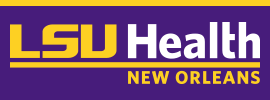Home > JLPHA > Vol. 1 (2020) > No. 1 (2020)
Journal of the Louisiana Public Health Association

Abstract
Introduction: The Rural Scholars Track (RST) program at Louisiana State University Health Sciences Center School of Medicine integrates rural experiences into medical training. The objective of the RST program is to encourage students to practice medicine in rural Louisiana in exchange for up to four years of tuition exemptions. An exploratory study was conducted to describe common characteristics of successful RST graduates from the program’s initiation in 2005 to present. The exploratory study and subsequent studies aim to identify characteristics among RST students that are predictors of successful matriculation through the program. Prioritizing applicants with these characteristics during the admissions process may lead to an increase in the program’s matriculation rate and a subsequent increase in the number of practitioners in rural Louisiana. Methods: An exploratory quality improvement study was conducted in which demographic variables were identified within 61 RST graduates’ medical school application records. Data for each variable were collected from the graduates’ primary and secondary medical school applications. Statistical Analysis Software (SAS) was used to determine demographic and frequency distributions of RST students. Results: Results show that among the graduates of the RST program, 62.3% were white and 57.4% identified as female. 47.5% of graduates grew up in a rural area, and the average application age was 23.5 years. During undergraduate studies, 67.2% obtained tuition assistance, and the mean science GPA was 3.68. Of the graduates, the most common medical specialty of choice was Family Medicine (42.6%), and “serving community need” was chosen as the most important characteristic of a medical career (31.2%). Regarding parents of graduates, the most common education level was a bachelor’s degree among both fathers and mothers (36.4% and 34.4% respectively). The most common occupations among graduates’ fathers were physician, business owner, and “other/unlisted” (11.54% each). For graduates’ mothers, the most common occupation was teaching. (18.64%). Discussion/Conclusions: Interesting findings include the overrepresentation of female medical students in the RST graduate population (57.4%) when compared to the incoming classes for the regular MD program (44% in 2018), as well as the large number of students who required tuition assistance during undergraduate education (67.2%). Future plans include comparing the current results to data collected from students who failed to complete the RST program to determine characteristics associated with successful program completion. Thus, applicants exhibiting statistically significant characteristics associated with program success may be targeted for acceptance into the RST program, with the ultimate goal of increasing the number of primary care physicians in rural Louisiana.
DOI
10.59020/67117
Recommended Citation
Gentile, Bailey; Brantley, Paula Rhode; and Coleman, Mary Thoesen
(2020)
"Public Health Briefs - Demographics of Rural Scholars Track Graduates at Louisiana State University Health Sciences Center-New Orleans School of Medicine,"
Journal of the Louisiana Public Health Association: Vol. 1:
No.
1, Article 53.
DOI: 10.59020/67117
Available at:
https://digitalscholar.lsuhsc.edu/jlpha/vol1/iss1/53

